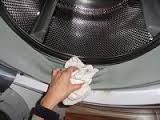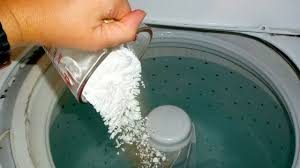- Home
- /
- Manager's Messages
- /
- Washing Machine Maintenance Tips
Washing Machine Maintenance Tips
Posted By kdub on August 16, 2016
- Always use detergent made for high-efficiency (HE) machines if you have one, and use the minimum amount (more is not necessarily better). Regular detergents may mechanically or electronically damage a machine. Using the wrong detergent may even void a warranty.
- For high-efficiency (HE) machines use less or forego liquid fabric softeners (one teaspoon will soften a whole load). The same for bleach (one tablespoon for concentrated bleach, two tablespoons for regular). Remove finished loads immediately. Do not let damp clothes sit in the machine (this provides an ideal breeding environment for musty smells and mildew).
When not in use, leave the door of the washer ajar, to improve air circulation inside the machine.  Clean out the washer door’s rubber seal thoroughly with a half-half solution of water and vinegar regularly. Use Q-Tips for hard-to-clean areas. Wipe the inside of the drum with this solution as well.
Clean out the washer door’s rubber seal thoroughly with a half-half solution of water and vinegar regularly. Use Q-Tips for hard-to-clean areas. Wipe the inside of the drum with this solution as well.- Monthly, pour some distilled white vinegar instead of laundry detergent into the dispenser, and add one cup of baking soda directly into the drum. Run the machine on the hottest cycle, plus an extra rinse. For extreme cases of mildew smells, replace vinegar with bleach and run a few quick cycles with hot water.

- Clean out the drain pump filter if one exists, every few weeks or whenever you notice problems with the water drainage, excessive vibrations, wet clothes after final spin, longer than usual cycle time, or unusual pauses during a wash cycle. Hair, fabric, and other various bits can get clogged up in the drain pump filter, leading to sluggish drainage of water. The drain pump filter location varies by machine (check your manual for details) but it is usually located at the front and bottom of the machine behind a small trapdoor. Use the drain line to remove any water in the pump first. Ensure that the spin speed you select is appropriate for the load you are washing. Higher spin speeds may mean drier clothes prior to putting them in the dryer, but also means extra wear and tear on the machine’s inner parts, potentially shortening its lifespan.
- Replace rubber washing machine water supply hoses with steel braided ones to reduce the risk of bursting.